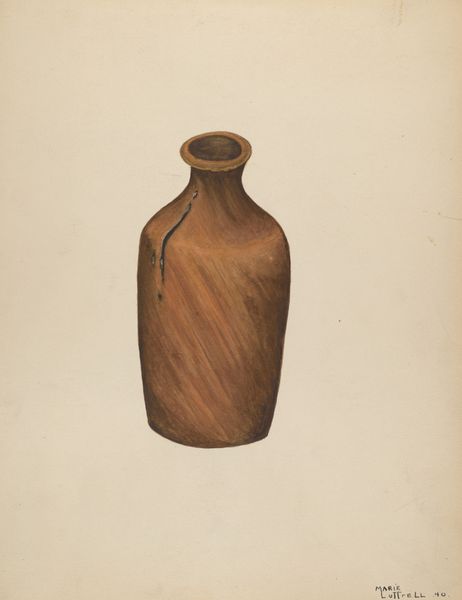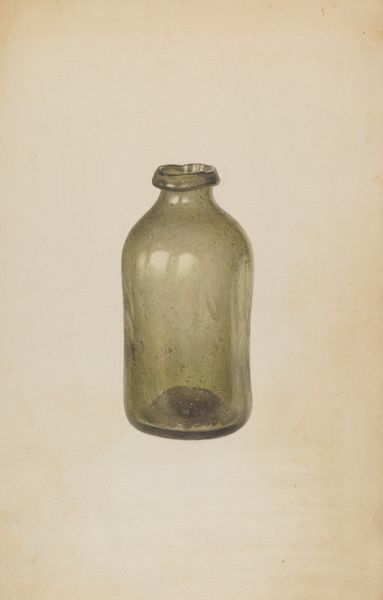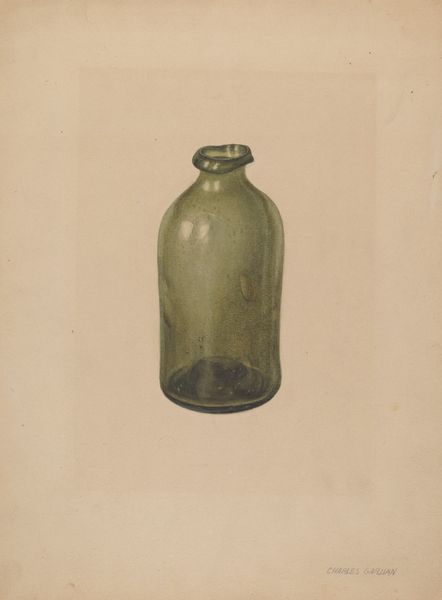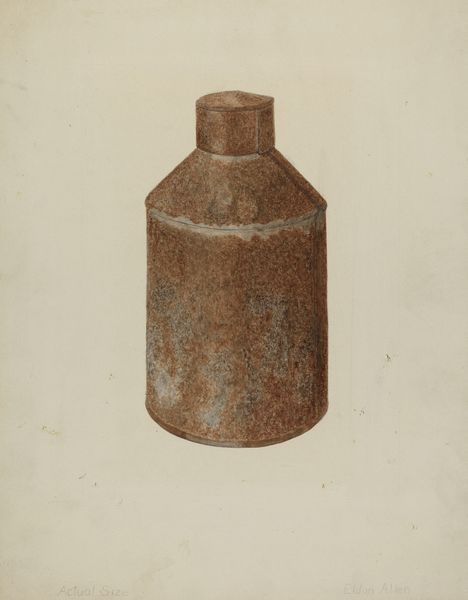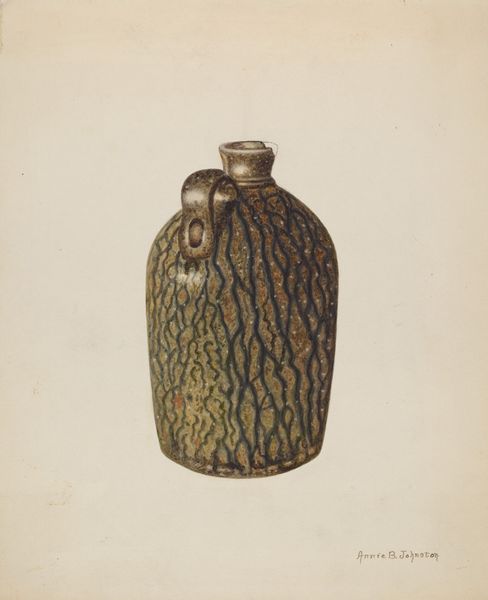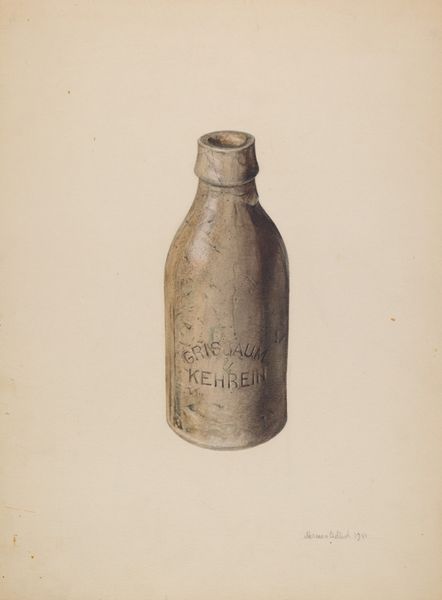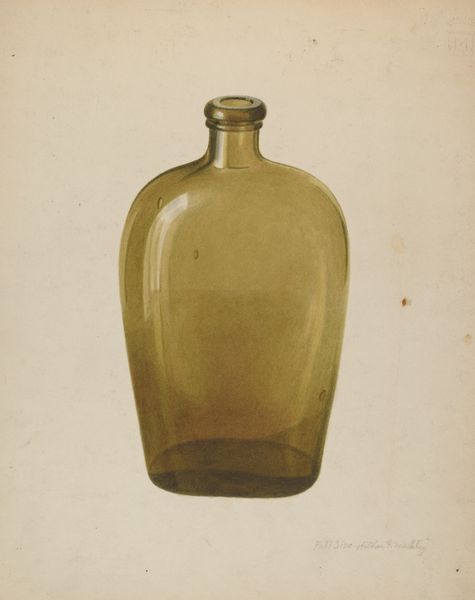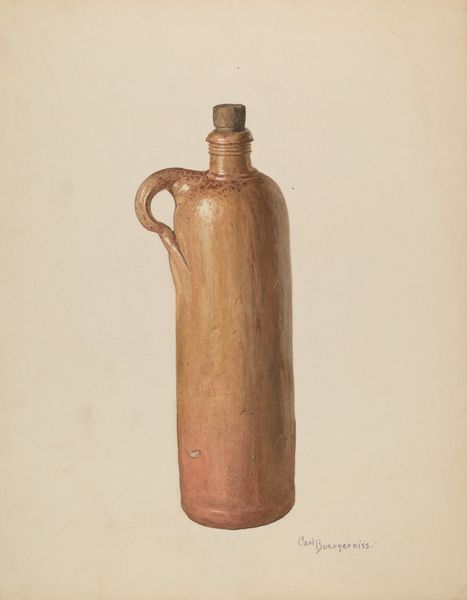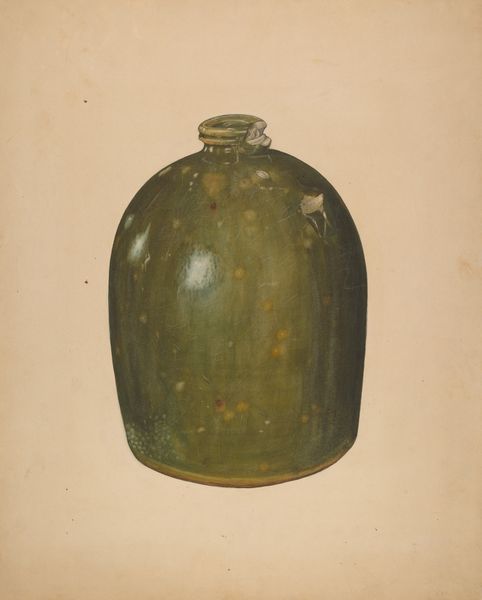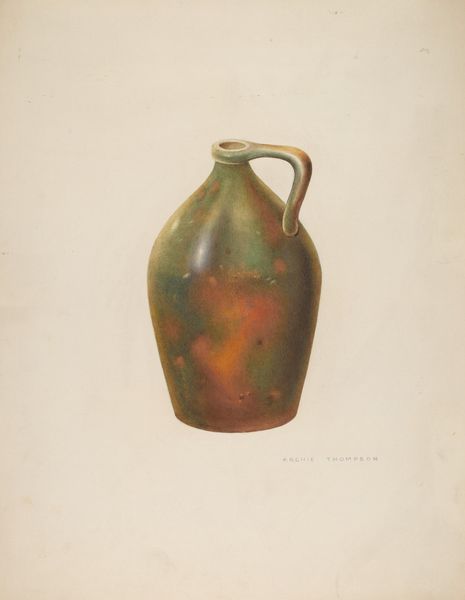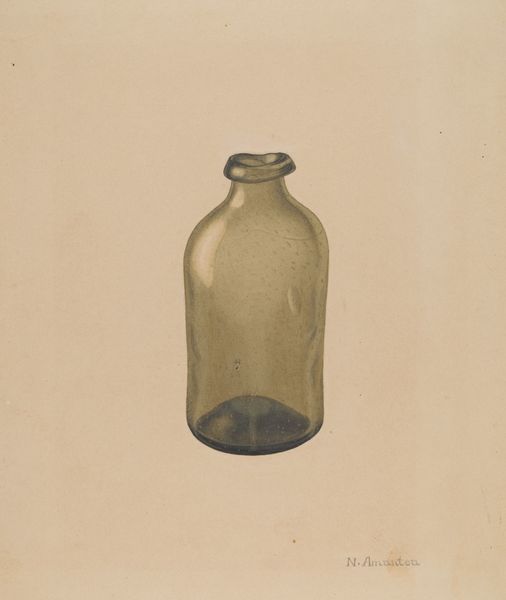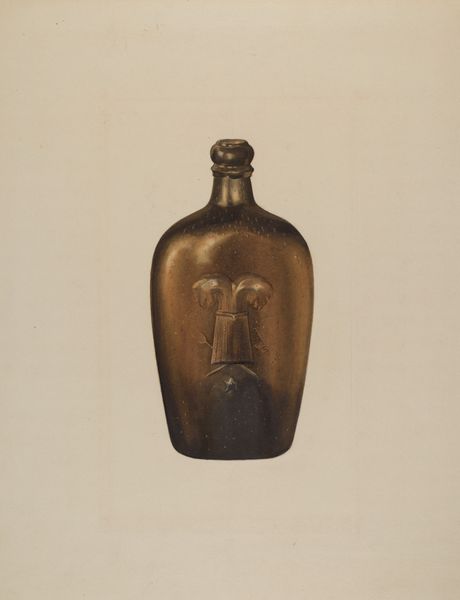
ceramic, watercolor, earthenware
#
ceramic
#
watercolor
#
earthenware
#
stoneware
#
underpainting
#
ceramic
Dimensions: overall: 35.5 x 27.8 cm (14 x 10 15/16 in.) Original IAD Object: 9 3/4" High 3 5/8" Dia.(bot) 1" Dia.(mouth)
Copyright: National Gallery of Art: CC0 1.0
Curator: Gerald Transpota's "Earthenware Ale Bottle," dating to about 1937, presents a seemingly simple object: a ceramic ale bottle, rendered with watercolor on what appears to be paper. The bottle itself is centered against a light backdrop, its form and subdued color palette hinting at functionality. Editor: My initial impression is that the bottle, almost devoid of adornment save the imprinted digits, projects an air of proletarian stoicism. There's an inherent tension in memorializing an everyday object consumed primarily by the working class, even as industrialization threatened to render these artisanal, handcrafted objects obsolete. Curator: Observe the composition, the strategic utilization of light and shadow, and how the artist guides the gaze through subtle variations in the sepia tones of the underpainting. There's a clarity and focus, despite its simplicity, that draws one's eye to the material objectness. Editor: I wonder if Transpota had considered the ecological impact, of that type of single use item? Considering the political tensions percolating globally during this artwork’s creation, I also speculate whether Transpota had intentions to explore class conflict—or perhaps evoke nostalgia for a pre-industrial past, free of modern corporate oversight, which, depending on who you were, maybe was not something desirable in the past. Curator: An interesting perspective, however I suggest the rendering’s aesthetic lies beyond the reach of ecological concerns. If the piece were reframed solely as cultural critique, would its structural elements still stand? The work, stripped down, seems a mere exploration of form. It could represent not political subversion but a refined aesthetic rendering where form serves solely for formalism's sake. Editor: Though seemingly inert and removed from context, such everyday objects—particularly those mass produced, which this represents to me—tell stories far larger than the immediate aesthetic properties would let on. Looking back at the form and the rendering's subtle shading, and knowing Transpota worked for the WPA's arts projects, I can imagine his commitment to creating dignity through his artistic process during such dire times for the everyday individual. Curator: Fair enough. Transpota’s choice of this very vessel certainly offers different possibilities for viewers and speaks, either consciously or unconsciously, to different readings than just objective aesthetics. Editor: Indeed, let's carry such complexity as we keep contemplating artistic narratives.
Comments
No comments
Be the first to comment and join the conversation on the ultimate creative platform.
